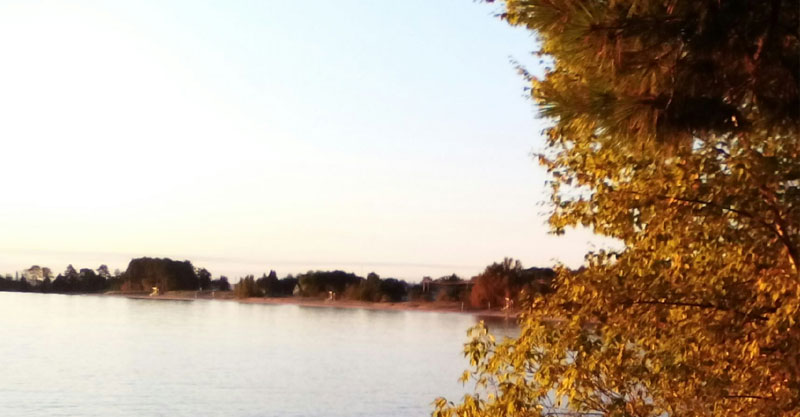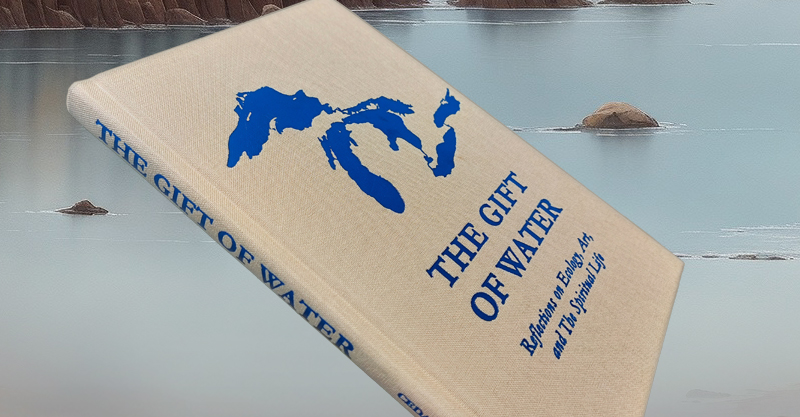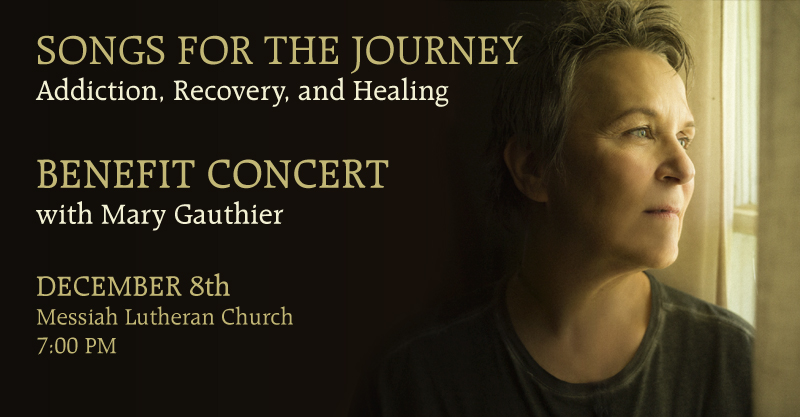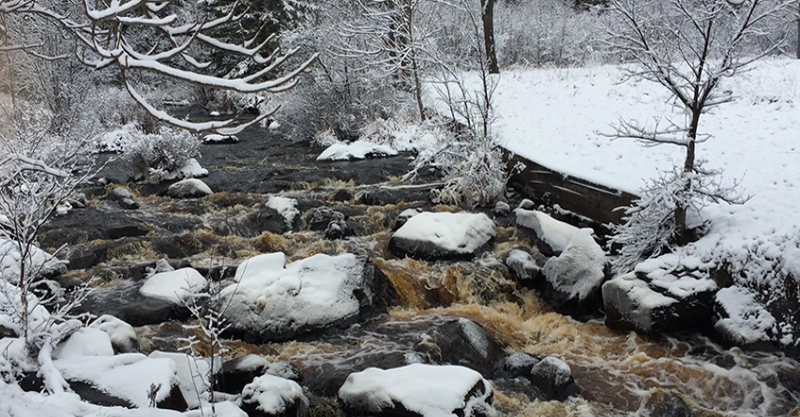The Rivers’ Pulse
as seen in the Marquette Monthly October, 2019
By Rochelle Dale
Not long ago, I stood on the concrete banks of the Cuyahoga River in the old industrial part of downtown Cleveland, Ohio. I rinsed my hands in the water and remembered a photograph I had seen just that afternoon of a river activist/ journalist in the 1960s with a cup of watery oil dipped from the same river. This year, 2019, marks the 50th anniversary of the last time that the Cuyahoga caught on fire. Yes, the last time. The Cuyahoga had caught fire eleven or twelve times before, but it was the infamy of that 1969 fire that at last set the United States on a path to clean up its waters.
The Cuyahoga is not like my river, the Yellow Dog. The Yellow Dog River is numbingly cold and fast, dropping over rocks, boulders, cliffs, and fallen trees, fashioning waterfalls from six inches to six feet or higher, dredging pools for the brook trout and other animals—including me—to swim. We are drawn and pulled to water, irresistibly, like hummingbirds to nectar. We crowd around lake-fronts and ocean views, build houses on the shores, sometimes burying the reasons we are there in bigger boats, bigger homes, more toys. But we are there because somehow, perhaps intrinsically, we know that it is the “Water of Life” or that “Water is Life”. Water within and water without.
I grew up in the farmlands of central Indiana where we raised corn, soybeans, wheat, and for the pastured cattle, hay. When there was not enough rain, to water her flowers my mom collected rainwater and saved it in empty laundry detergent jugs in the basement. For fear that our shallow well might run dry, we were never allowed to use water for fun, and we always had to be sure the cattle could drink. There were no ponds, lakes, or rivers in this landscape, only fields and a few drainage ditches where my friend and I would go and sit beside the trickle of water in the culvert under the gravel road—our hiding spot. All I wanted on those long summer days was a place to swim—water.
Now, in our western states, rivers run dry before they reach their destination. The talk is about water rights. Whose water is it and why? Farmers need it to water their crops and livestock, which will in turn feed people all over. Cities need it to supply each household. We all need it—need, not desire. Every summer in western South Dakota, where I once lived, native Sundancers face the sun and pray in circles around the sacred tree for four days, drinking water only at dawn and at dusk. They know thirst and the need for water in their often-arid land. In the ceremonial lodge, when I drink the fresh spring water, I imagine the water coursing through the rivers of the world and through my body at the same time. I believe we are all inseparable from each other. Often I go to the banks of the Yellow Dog River when I need to think, to focus my mind, to work out problems or sadness, or to play. Most times, I think the river gives us more than we can ever return, but maybe all the rivers ask is for us to love them.
In a 1968 speech to the General Assembly of the International Union for Conservation of Nature, Baba Dioum, a Sengalese environmentalist, spoke these words: “We conserve only what we love.” From a very early age, my mom instilled in us the notion that gifts of all kinds should be treated with respect and gratitude. Water is a gift, and the people of the Cuyahoga River learned that the hard way, but with the help of people who always loved that river, it is alive again and once more the life force of the city. Rivers were once the identifiable pulse of this country, and to acknowledge and understand the pulse of our waters is to know a place in a mysteriously intimate and intricate way.
I love my river. I love the Yellow Dog’s clear cold water, its song from on top of the hill, and I will teach my grandchildren to love it, and to understand their great-grandmother’s lesson about gifts and gratitude.
WATER SAVER TIPS
To water flowers that you plant for bees and hummingbirds, collect rainwater and save it in empty, clean laundry detergent jugs with lids—so you are not raising mosquitoes.
Know where your water comes from, how much you use on average per day, and determine how you could reduce unnecessary water use.
Contributor’s note: Rochelle Dale has lived along the Yellow Dog River in northern Marquette County for thirty years. She is the administrator of the Yellow Dog Watershed Preserve.

“The Gift of Water” columns are offered by the Northern Great Lakes Water Stewards and the Cedar Tree Institute, joined in an interfaith effort to help preserve, protect, and sanctify the waters of the Upper Peninsula.






